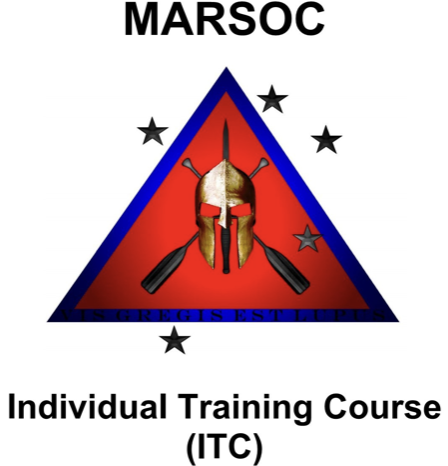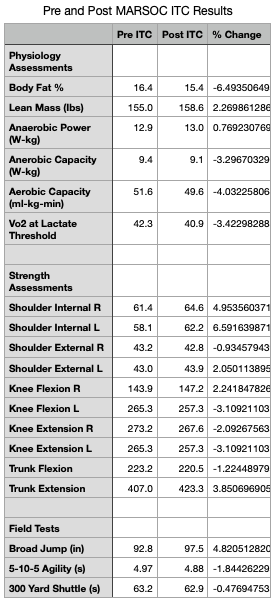By Rob Shaul
A recent study published in the July, 2021 issue of the Journal of Conditioning Research, “Altered Physical Performance Following Advanced Special Operations Tactical Training,” tracked strength and fitness changes of 73 Marine Corps MARSOC candidates over 9 months while they completed the 5 phases of the Individual Training Course: SERE, ground combat/Amphip Ops, Special RECON, CQB, and Irregular Warfare, and for the enlisted candidates, Basic Language Schools.
A battery of physiological and fitness assessments were completed before ITC, at the conclusion of ITC, and again at the end of the Basic Language Course. Pre and post ITC results are below:
What was most interesting to us was the pre and post ITC results. The Candidates decreased bodyfat 6.5%, increased muscle mass by 2.2%, and increased shoulder strength. Nearly every other measure including Anaerobic capacity, aerobic capacity, V02 at lactate threshold, agility and 300-yard shuttle times decreased. However, none of these decreases was more than 5%.
Our assumption is that during the different phases of ITC, candidates get little time for formal fitness training beyond their tactical training, so the tactical training does a fairly good job of keeping their overall fitness up, and it has a positive effect of cutting fat and increasing lean mass.
The study also tested the enlisted candidates at the conclusion of their Basic Language Course (BLC) and found overall strength increased, but aerobic and anaerobic fitness continued to decline.
BLC is classroom-intensive, but does include combatives training. Strength coaches are on hand to program and coach training sessions, but the candidates are not required to use them – which is somewhat disappointing. Our sense, based on the results is that not surprisingly, many of the candidates were sick of endurance and got back in the weight room to train strength primarily on their own.
You Might Also Like MTI’s MARSOC ITC Training Plan

